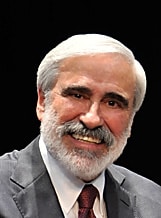
Dr. David Schnarch
New ideas, important thoughts, and assorted musings

Dr. David Schnarch
New ideas, important thoughts, and assorted musings
 Removing The Masks, part 3
Removing The Masks, part 3
By David Schnarch, Ph. D.
Kristin turned to Stanley and said, “Do you want to say what you realized too?” Whereupon Stanley brought up several childhood vignettes illustrating how cruel, dishonest, and malevolent his parents and relatives were. Stanley’s dad was often out of control, beating Stanley’s older brother with a belt to “instill discipline”—which, Stanley mapped out, was really an expression of a need to feel respected and a desire to punish and hurt. Then Dad made Stanley’s brother apologize, trying to break the boy’s spirit.
While attachment therapists focus on children not feeling “seen” (internalized) by parents, a more common childhood trauma occurs when children see their parents. As in Stanley and Kristin’s case, good mind-mapping can be traumatizing because children see their parents as they really are. Lots of parents are unlovable, unworthy of respect, and some are even actively malevolent. When children map out these parents’ minds, they become traumatized. The combination of disgust and hatred such parents engender is so hard for children to cope with that it welds the child to the parent like superglue. These children become hypervigilant, “blind,” and skilled at masking their minds.
Kristin then said to Stanley, “When I looked at how you’ve tortured me—and sex isn’t the only way you’ve done it—I also saw myself. I torture you, too. I’m constantly late and make you wait, though I know you hate this, and I complain about how your mother tries to take advantage of you. I act like I’m standing up for you, but I’m actually pushing you to stand up to her though I know you don’t want to do this. This doesn’t mean I forgive you for what you’ve done to me. I’m not perfect, but I think you’re crueler than I am.” Stanley nodded in agreement.
“I’ll never get back the time I’ve wasted trying to be understanding and supportive. Those opportunities for good sex with someone who values me are gone, but I’m not willing to give this up forever. If Dr. Schnarch can help us cure your rapid ejaculation, I’m willing to see what happens between us. But if you torture me while we’re solving this—or afterward—believe me, this marriage is over.”
I wasn’t surprised Kristin was confronting herself. I’ve found that if I can get the best in one partner to stand up—by which I mean people’s ability to confront themselves and take responsibility for what they truly want in their relationship—it triggers the best in the other partner to do likewise. This isn’t reducible to lockstep reciprocity, because first steps are taken without knowing what the partner’s response will be, and without assurance the partner will do likewise. This virtuous cycle rests on unilateral self-confrontation, not coregulation.
In Praise of Differentiation
Conventional wisdom in couples therapy says troubled couples have to get more securely attached before they can differentiate. But repeatedly I see troubled couples differentiate first—which leads to stabler marriages. I believe couples have to stop manipulating their stories and tampering with facts to keep their relationship together. Far from being impossible or improbable, this is the way relationships really work. Realizing this yields a different kind of experience in therapy—not one of safety and hovering support, but one in which higher anxiety and pressure and faster pace of change emerge, as people realize their full capacity to meet the adult challenges of life.
My main focus as a therapist is to facilitate differentiation, by which I mean people’s ability to balance humankind’s two most fundamental drives: our desire for attachment and connection, on the one hand, and our desire to be an individual and direct the course of our own lives, on the other. The latter refers to the ability to hold on to yourself when important people in your life pressure you to conform. Differentiation yields emotional autonomy—the basis of healthy interdependence and the foundation for intimacy and stability in long-term relationships.
In working with couples, it’s crucial to distinguish two different kinds of intimacy: “other-validated intimacy” and “self-validated intimacy.” Other-validated intimacy is when one partner discloses and the other reciprocates with acceptance, validation, empathy, and support. This is a hallmark of attachment-based therapy. By contrast, self-validated intimacy results from confronting yourself, self-disclosing even if your partner won’t accept, empathize, validate, or support what you’re saying, and providing your own validation.
That’s what Stanley did when he acknowledged his hidden agenda in his sexual relationship with Kristin. Rather than getting a sense of safety, security, reassurance, or commitment from her, he had to “hold onto himself,” stand on his own two feet, and tell the truth. Under the right circumstances, I see people do this all the time. Shifting from depending on other-validated intimacy to doing self-validated intimacy fundamentally changes the dynamics of relationship and revamps partners’ maps of each other’s minds.

Reality in the Consulting Room
Many therapists fear clients will take offense and walk out if they’re as direct and confrontational as I appear to be. In fact, in my practice, that virtually never happens. My clients say they stay because they know I can see them, and they trust me because I talk straight and confront them about difficult topics. Clients are likelier to walk out if you suddenly adopt a style of honesty and directness that conflicts with your prior interventions. When you’ve soft-pedaled difficult issues and sugarcoated harsh truths, confronting them about doing cruel or selfish things seems judgmental and pejorative, as if you’re ceasing to be supportive and you don’t like them anymore.
Collaborative confrontation doesn’t seem like a departure from therapeutic business as usual when it is business as usual. If you don’t use positive reframing to put a smiley face on everything, and your questions demonstrate your willingness to see people’s darkness (and their goodness), clients can handle their darker issues better when they’re exposed.
Having gone through this process with many couples, I’ve learned that, paradoxically, the bigger the lurking bombshell, the more tenuous the situation, and the greater the impulse to approach this in small incremental baby steps, lest things blow up, the more important it is to approach tough issues directly, with their implications fully visible, and shepherd couples through this stage quickly. Progressively unpacking timid disclosures of difficult truths saps partners’ endurance, courage, and belief in themselves and each other. In contrast, watching your partner confront himself unilaterally, without guarantees of acceptance, builds mutual respect, earns forgiveness, and induces you to act in kind.
Here are things therapists can do to encourage clients to decide their best option is going through the process of differentiation and self-validation:
- Use collaborative confrontation to wake people up by exposing their games and encouraging their best to come out.
- Work quickly. Speed creates hope, and a brisk pace yields greater traction with clients.
- Use honesty to harness clients’ innate desire for intimacy and partnership. We can’t be safe and secure while we hide, because our partner really doesn’t know us. When we’re finally known, we can truly relax. Difficult truth-telling makes couples feel productively and profoundly connected.
- Foster a sense of unilateral responsibility and differentiation to enhance people’s collaborative alliances.
Whether unwittingly or by design, therapists co-construct how clients function, feel, and look, to such a profound degree many of us can’t imagine. We lose sight of how we co-construct clients in ways that support our favorite theories. Attachment therapists don’t really believe they are co-constructing abandonment fears: they believe they’re treating it. I readily concede differentiation-based therapy is co-construction too.
Since therapists always co-construct clients, do it well. Co-construct clients as resilient and resourceful, capable of deliberate malevolence as well as knowing right from wrong, strong enough to acknowledge their failings, to act with integrity, and to be worthy of respect. Don’t reduce them to well-intended wounded children, who do misguided things out of overwhelming insecurities and fears of facing the world on their own. To support this approach to therapy, it’s important to build in signposts that signal clients that their experience with me will differ from conventional therapy. To start with, I don’t try to convince clients that my office is a “safe place.” Instead, my office, I’m clear, is “a place where change happens.” Of course, the first rule of therapy is “Do no harm.” But ineffective therapy isn’t harmless, and systematically underestimating clients’ abilities, whitewashing darker motives, and squandering clients’ time, money, and patience isn’t a safe clinical stance. However radical my approach may seem from the perspective of attachment-based, conventional psychotherapy, I’d propose another perspective: there’s nothing conservative about treatment that underestimates people’s ability to confront difficult truths and ignores their vast potential to face up to the challenge of transforming their relationships and their lives.


 Removing The Masks, part 3
Removing The Masks, part 3
